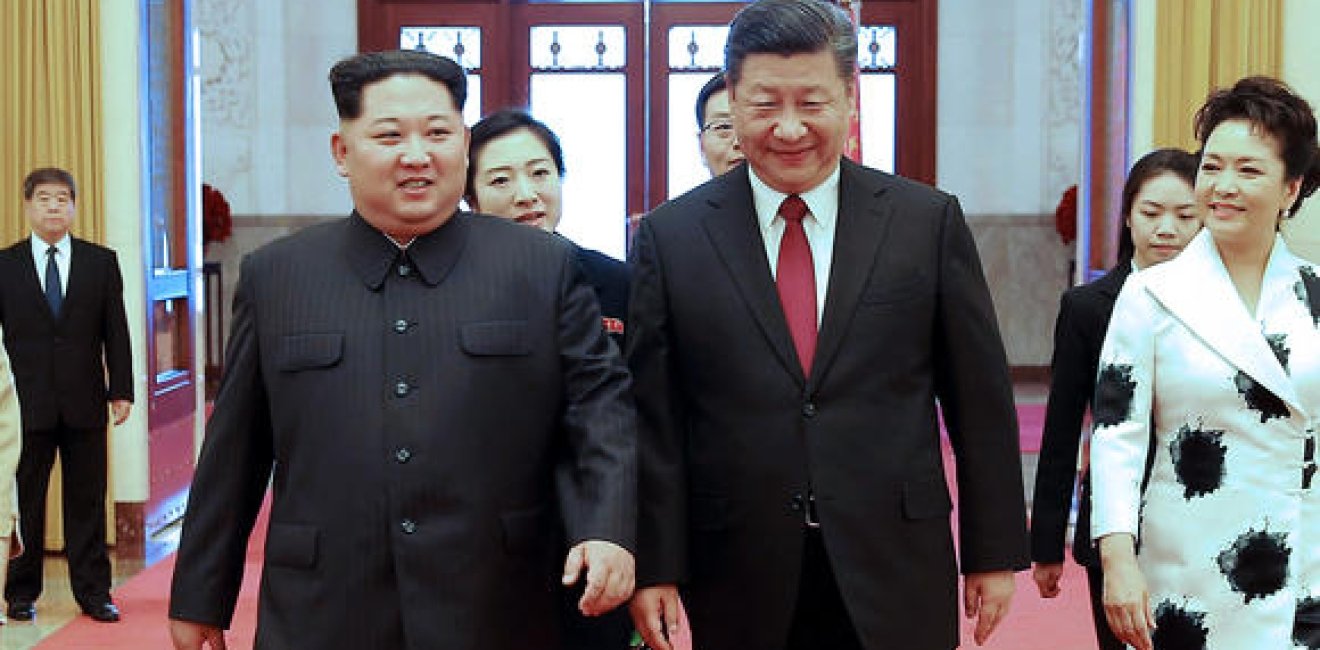
A blog of the Kennan Institute
BY MAXIM TRUDOLYUBOV
China and Russia, two players with deep historical ties to North Korea, were conspicuously absent at the scene of the Trump-Kim handshake.
Both China and Russia, along with the United States, South Korea, and Japan, have participated in the six-party North-Korea resolution process, which started as early as 2003. But it was U.S. president Donald Trump who—jumping the laborious multilateral process—stole the spotlight and welcomed North Korean dictator Kim Jong Un to the free world.
Trump also seems to have used, by accident or design, a page or two from the Chinese and Russian “double-freeze” proposals in getting Kim to the table.
Russia’s Vladimir Putin tried to get involved in the process but did not manage to get out in front of Trump in securing a meeting with Kim. Russia was not even mentioned during the day’s events, but that does not mean the Kremlin will stay on the sidelines during the resolution process.
It may seem that Trump, by granting Kim a summit, has elevated a dictator to a statesman and North Korea to the level of an independent player on the world stage, but the summit would not have been possible without China’s preparatory work. In early March Kim pleaded for a summit with Donald Trump, but he went to Beijing first, meeting with President Xi of China in mid-March and later having a second meeting.
In the unpredictable North, little is possible without China’s help, as Beijing accounts for 90 percent of North Korea’s trade volume and supplies Pyongyang with most of its energy and food.
Trump said the UN-approved sanctions against North Korea would stay in place, but China has to be onboard to make this possible. Meanwhile, the Chinese Foreign Ministry spokesman Geng Shuang suggested it was time to lift the sanctions.
Vladimir Putin, speaking ahead of the Trump-Kim summit, called the U.S. president’s decision to make contact with Kim Jong Un “very brave and mature.” The irony of the moment is that the U.S.-North Korea summit followed the blueprint that Moscow had originally put forward, but Moscow itself was not even officially represented in Singapore.
Both Moscow and Beijing preferred that the North-Korea resolution proceed along the lines of the Chinese-Russian “double-freeze” initiative.
The solution as worked out by Beijing and Moscow was a proposal meant to avert a nuclear stand-off and referred to stopping North Korean missile launches and nuclear tests while at the same time suspending joint U.S.-South Korean military exercises in the region. The plan did not involve any human rights or humanitarian components because Beijing and Moscow do not consider those issues relevant.
Pyongyang has complained for years about the drills held annually by the United States and South Korea, calling them “nuclear war exercises” and “threats to international peace and security.” Suspending the “war games” as inappropriate or provocative is exactly what President Trump offered to the North Korean side during his post-summit news conference.
Although not fixed on paper, the agreement between Trump and Kim looks essentially like China’s double-freeze plan. Human rights issues are missing from the document; they also were not present in the original Chinese-Russian plan.
Both China and Russia should thus be happy about this part of the resolution as it has transpired so far. Those meetings between Xi and Kim might have played a role in Kim’s amenability.
The contentious part is the security guarantees that Trump has promised to extend to North Korea. A solution that involves complete denuclearization in exchange for North Korean regime security is what Moscow calls a “Libyan model,” the Russian foreign policy commentator Vladimir Frolov wrote recently.
And that is exactly the concern the state-run Channel One expressed in a commentary about the Trump-Kim summit: “Will these guarantees be as rock-solid as those the U.S. provided to Gaddafi of Libya or the Iranian leadership?” Gaddafi was killed after he gave up his nuclear program and the U.S. walked out of the deal with Iran immediately after Tehran started to comply with its provisions, the Channel One commentator pointed out.
The terms of the Singapore agreement are purposefully vague. Secretary of State Mike Pompeo declined to say Monday what the guarantees Trump mentioned actually meant.
A lot remains to be clarified. The U.S. president did manage to stage a scene that was poised to make waves around the world. Kim’s North Korea, Moon Jae-in’s South Korea, Xi’s China, and, at a certain distance, Putin’s Russia seem to be the winners so far. North Korea’s nuclear program, the security guarantees offered by Trump, and the sanctions against North Korea will be at the center of any future negotiations. South Korea, on one side, and China (and Russia) on the other will try and take it from there.
Author

Editor-at-Large, Meduza

Kennan Institute
After more than 50 years as a vital part of the Wilson Center legacy, the Kennan Institute has become an independent think tank. You can find the current website for the Kennan Institute at kennaninstitute.org. Please look for future announcements about partnership activities between the Wilson Center and the Kennan Institute at Wilson Center Press Room. The Kennan Institute is the premier US center for advanced research on Eurasia and the oldest and largest regional program at the Woodrow Wilson International Center for Scholars. The Kennan Institute is committed to improving American understanding of Russia, Ukraine, Central Asia, the South Caucasus, and the surrounding region through research and exchange. Read more

Explore More in The Russia File
Browse The Russia File
Chechnya as a Model of Modern Russia

Russia’s Indigenous Communities and the War in Ukraine

Gas and Power in a Changing US–Russia Relationship

